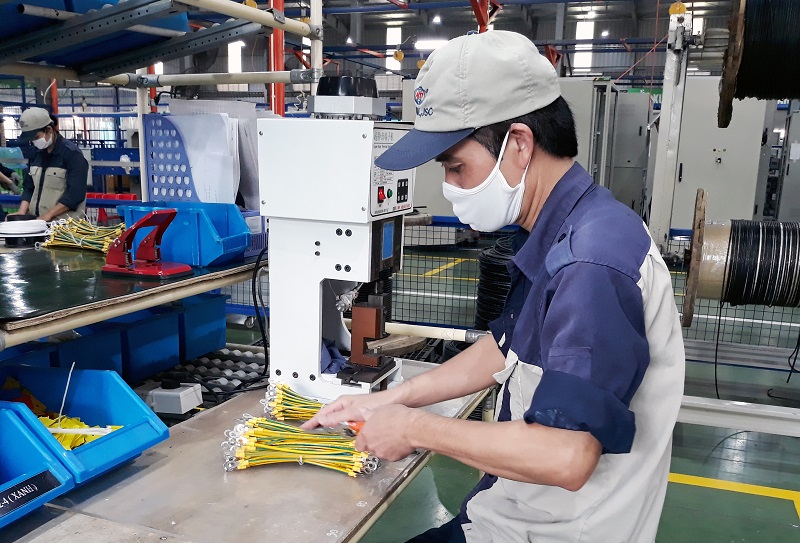Covid-19 containment in August key to ensuring GDP growth over 6%: VEPR
Vietnam’s economic prospects in the remaining months of the year would depend on the country’s efforts in ending the current Covid-19 outbreak.
A GDP growth of up to 6.1% would be possible in case Vietnam is able to contain the Covid-19 pandemic right in August.
| Overview of the online launch. Photo: Hai Yen |
Pham The Anh, chief economist at the Vietnam Institute for Economic and Policy Research (VEPR) gave the prediction at the virtual launch of its quarterly macro-economic report today [July 21],
The economist, however, also revealed other two growth scenarios with economic growth rates varying from 3.5-4% in case Covid-19 restriction measures are in place until the fourth quarter, and 4.5-5.1% if the outbreak ends in the late third quarter.
Overall, Anh suggested Vietnam’s economic performance in the remaining months of the year would depend on the progress and scale of the vaccination program; the effectiveness and side effects of the Government’s measures against the pandemic; and supporting programs to boost growth.
“To aid recovery in short-term Vietnam should accelerate the funding disbursement progress of national projects, which would lay the foundation growth in the post-pandemic period,” he added.
Meanwhile, Anh mentioned the Government should consider adopting an accommodating monetary policy and keeping the expansion rate of money supply at 10%.
As the pandemic continues to cause hardship for businesses and workers, especially those in the informal sector, Anh stressed the necessity to ensure the effective implementation of the financial relief package.
Looking back at the country’s economic performance in the first six months of the year, Anh said the fact that the Government’s effective control of the pandemic by late first quarter helped growth to reach 6.61% in the second quarter, and 5.64% for the January-June period.
| Production at A Chau Industrial Technology Company in Quat Dong 2 Industrial Cluster, Hanoi. Photo: Hoai Nam |
Anh, however, expressed concern over pending issues of the economy, including the high fiscal deficit, low disbursement rate of capital expenditure; growth dependence on the FDI sector; and slow progress in the privatization process of state-owned enterprises.
Economist Can Van Luc added the process of economic recovery in Vietnam remains uneven, with enterprises in fields such as transportation, logistics, tourism, and education struggling for survival.
“Vietnam should continue to stick with the twin goal, as overreacting against the pandemic would cause severe consequences to the economy,” Luc said.
In addition to the government’s recent US$1.1-billion package program, Luc called for specialized support for small and medium enterprises focusing on certain sectors and provinces/cities.
“Enterprises qualified for this program could get loans with interest rates of about 3-4% for a year,” Luc said, adding this would provide a much-needed boost for small enterprises at this difficult moment.
For the time being, Luc suggested Vietnam could look for new driving forces for growth, including searching for new markets for trade diversification, simplifying business conditions, and pushing for digitalization.
Amid serious Covid-19 situation in Vietnam, international organizations, including Standard Chartered and the Asian Development Bank (ADB) have revised down their respective GDP growth forecast for Vietnam. In this regard, Standard Chartered expected Vietnam’s economic growth to reach 6.5%, down from its previous 6.7%, while saying containing the pandemic early would have major impacts on the economic outlook in short term. The ADB, however, made a more cautious projection, expecting growth at 5.8% from the 6.7% estimated in April. |













